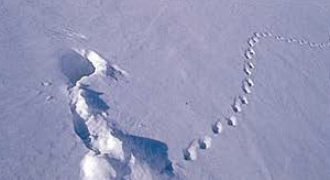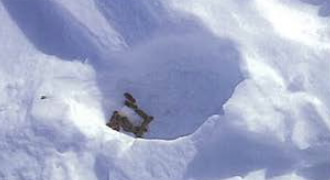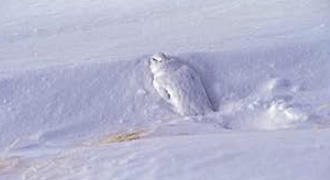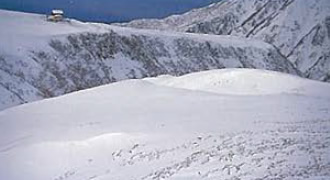
Winter life
With the close of the Alpine Route for the winter, silence falls over Tateyama. Only a few living things are capable of surviving the winter here. Around Murododaira, the snow pack reaches eight meters in height, and in some places snow accumulation can reach 20 meters, as can be seen at Yuki no Otani. This is the world that the rock ptarmigan lives in. A predominant westerly wind blows against the Tateyama Mountain Range during this season, and on some surfaces which catch the full blast of the wind, there is little to no snow accumulation. In these areas, a small amount of vegetation is exposed, forming an important food source for the rock ptarmigan.
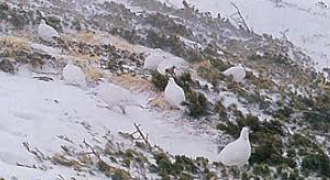
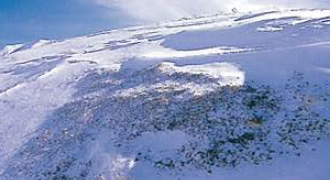
At 4 a.m. after a blizzard, the call of the rock ptarmigan can be heard in the darkness. A group makes their way up the snowy slope to one of Murododaira's few feeding places, where low-growing dwarf evergreens such as black crowberry, Aleutian mountainheath, and cowberry can be found peeking out of the snow. The plants are frozen to the ground, so the rock ptarmigans use their strong beaks and claws to dig them out.
The pace of feeding in the morning is very fast; an individual can eat 20-30 leaves per minute. After about 8 a.m. they begin slowing down, perhaps because they have eaten enough. As the sun comes out and the temperature rises above 0 degrees Celsius on warm days, the birds rest, dozing off as they bask in the sun.
Winter days are spent alternating between searching for food and resting. Around 6 p.m., the majority begin to head back to their shelters, but some will stay active until as late as 8 p.m. Out of about 30 rock ptarmigans which appear at the Murododaira feeding ground on good days, most are males. Females are not usually seen in this area until late March; most females which live here spend the winter farther down in areas such as the Shomyo Gorge, amongst the fir and birch trees.
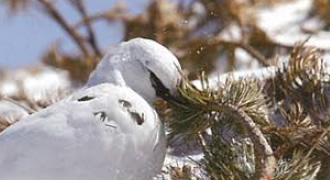
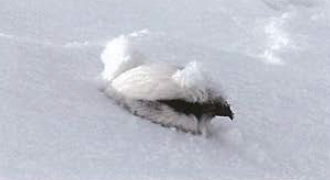
The shelters which rock ptarmigans create in the snow are usually located on the steep slope of valleys, on the north or east side in order to avoid the westerly winds. The remnants of nests are often referred to as "snow holes". Inside one can find 40 to 60 droppings; judging from the number, the length of time that the nest was used can be determined. Sometimes two or three separate piles can be found, demonstrating that the individual moved around during the night, perhaps because it became difficult to breathe with the accumulation of snow.
During the five months when people do not visit over the winter, Tateyama becomes the realm of the rock ptarmigan. It is the natural environment in its original form, an untouched mountain wilderness.
